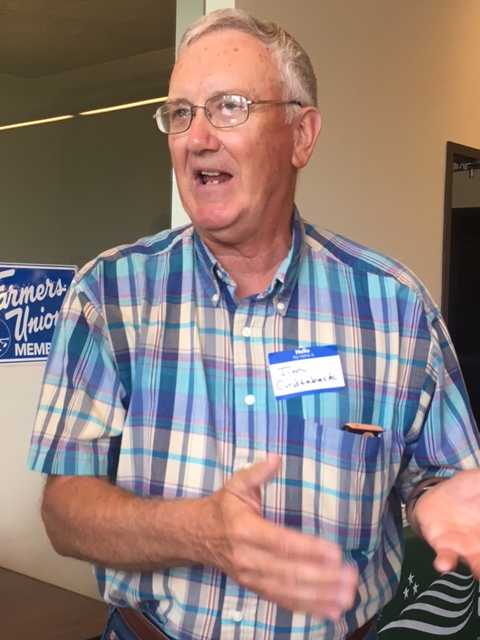From the Field: Farmers Are the Original Conservationists
By Tom Driscoll, Director of NFU Foundation and Conservation Policy Farmers are the original conservationists, and no one knows the soil that sustains us better than the farmers who work it. Family farmers have a strong partner in the U.S. Department of Agriculture (USDA) in supporting and coordinating efforts to protect our environment and shared natural resources. It’s critical that farmers, USDA agencies, and legislators converse to maximize the benefits of our collaborations.I had the opportunity to visit with a number of farmers throughout Iowa this week at Iowa Farmers Union’s farm bill listening sessions in Decorah, Washington, and Orient. We talked about conservation programs, research, and rural development. I heard insightful opinions on these and other issues, and was especially struck by an idea one family farmer shared that tied all three together.During the second listening session, Jim Cuddeback of Washington, Iowa, suggested accelerating the production and use of dedicated biomass crops to be used in clean energy production. He talked about the University of Iowa’s Biomass Fuel Project, which sources locally produced biomass to burn in the university’s main power plant. This displaces the fossil fuels that would otherwise be used in the plant, decreasing emissions of greenhouse gasses and other harmful pollutants while providing electricity for the university.One of the energy sources used in this project is giant miscanthus grass. Miscanthus stands have relatively low input requirements for fertility and pest control. They grow to about 12 feet each year for 15-30 years, achieve soil health and water quality benefits similar to prairie strips, and provide habitat for wildlife. However, they take about three years to establish productive yields. The University of Iowa’s project exploits existing power plant infrastructure, a process that could ideally be replicated in other areas. In contemplation of how quickly this coal-displacing technology could be deployed, the three-year period it takes miscanthus to be productive presents a challenge to producers and power plants. So Jim shared an idea to help farmers and policymakers address this challenge: allow farmers to plant miscanthus on CRP land.The Conservation Reserve Program (CRP) is an important tool to help producers achieve conservation priorities. CRP is sometimes thought of as a land retirement program, but that doesn’t properly account for its functions as a working lands program. Producers are, after all, required to undertake mid-contract management and other endeavors that would not be appropriate to retired land. With that in mind, Jim suggested that CRP land set to expire in three years that is located near a market for biomass crops (and, I would suggest, where it is desirable to encourage use of biomass crops) be eligible for planting miscanthus. The CRP payments will continue to secure the aforementioned environmental benefits for the three remaining years under contract. Further, if a viable market for the biomass is established in that time, the CRP payments will help secure soil health, water quality, and wildlife benefits for an additional 15-30 years. This all contributes to reducing greenhouse gas emissions that contribute to climate change that makes food production more difficult and threatens many other, if not every other, aspects of the economy. Jim’s idea would also make CRP that much more flexible and a more viable option for more family farmers.Every change to conservation programs presents new challenges to the agencies that operate them. But family farmers are resourceful and creative, and I’m proud to work for an organization that ensures their ideas for improving stewardship are heard.


